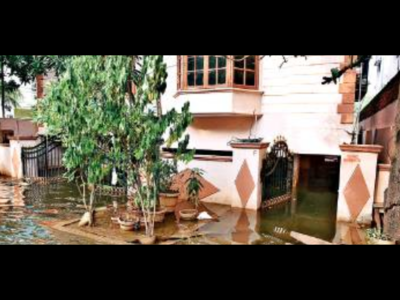Indian Express 29.12.2009
Sandstone or granite? Building material debate rages on

Connaught place : NDMC, traders’ association favour ‘sturdier’ granite, Art Commission recommends sandstone to ensure original ‘look’ is maintained
The choice of flooring for corridors across blocks of Connaught Place has become the bone of contention between the Delhi Urban Art Commission (DUAC) and New Delhi Traders’ Association. While the former has been advocating sandstone, the latter is vouching for the “sturdier” granite.
And the latest ‘party’ to the ongoing tiff is Lieutenant Governor Tejendra Khanna — he wrote to the Ministry of Urban Development earlier last month recommending granite.
While the ministry is yet to take a final decision on the fate of Connaught Place under its restoration project, other areas in the city are set to be covered by sandstone by next year.
Both the New Delhi Municipal Council (NDMC) and the Municipal Corporation of Delhi (MCD) have begun work on the core Games projects, including construction of pavements and sidewalks in the heart of the city. As part of the project, the civic bodies are using sandstone to lay pavements in most areas to “maintain continuity with the existing construction”.
While the NDMC is using Dholpur Pink sandstone for pavements in most areas under its jurisdiction, including SP Marg, Rajpath, Ashoka Road and Shahjahan Road among others, the MCD is using red sandstone in areas like North Delhi Ridge, Kashmere Gate and the entire Walled City.
“In areas within and around the Walled City, we are using sandstone for pavements to maintain the link between the heritage structures. According to experts, sandstone looks elegant and lasts long. Many historical monuments have also been made from this stone; it will gel with the background,” said MCD spokesperson Deep Mathur.
The NDMC, too, favours sandstone for pavements as it “maintains the city’s aesthetics”. “Both MCD and NDMC are using sandstone for pavements in landscape areas where it was the favoured construction material before 1920,” said an NDMC official.
The civic body justifies its bend towards granite in CP comparing the footfall in the heritage market and on the pavements.
While there is no clear estimate, NDMC officials said nearly 2,000 people throng the inner corridors during peak hours as compared to a mere five per cent on the pavements. “It is all about where the footfall converges. Since the corridors and the Metro entries witness most rush, we decided to use granite for flooring while sandstone remained the favourite choice for open spaces,” the official said.
The Art Commission, meanwhile, stands firm on the use of sandstone. “One cannot tamper with the original material as far as restoration goes. Sandstone is the original material and NDMC will have to use it for all its blocks,” DUAC chairperson K T Ravindran said.
While a decision is awaited from the ministry, New Delhi Traders’ Association members have decided to seek Chief Minister Sheila Dikshit’s intervention in the stalemate.


